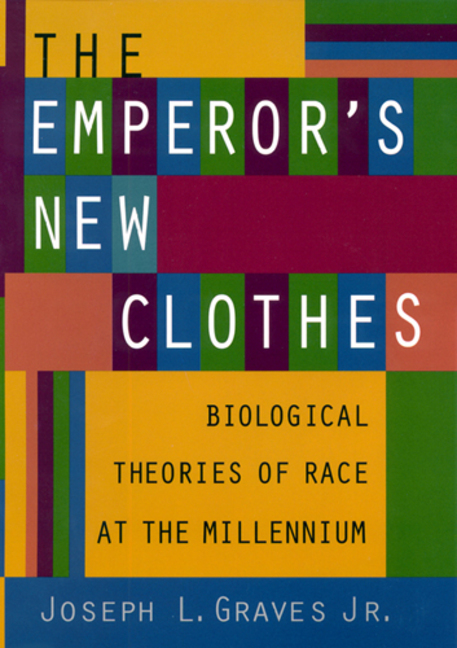The Emperor’s New Clothes: Biological Theories of Race at the MillenniumPosted in Books, Health/Medicine/Genetics, Media Archive, Monographs, Politics/Public Policy, Social Science on 2012-01-09 06:53Z by Steven |
The Emperor’s New Clothes: Biological Theories of Race at the Millennium
Rutgers University Press
2003-01-23
272 pages
14 figures, 24 tables
Cloth ISBN: 978-0-8135-2847-2
Paper ISBN: 978-0-8135-3302-5
Joseph L. Graves, Jr., Professor & Associate Dean for Research
Joint School of Nanoscience and Nanoengineering
North Carolina A&T State University & University of North Carolina, Greensboro
In this groundbreaking book, Joseph Graves traces the development of thought about human genetic diversity. He argues that racism has persisted in our society because adequate scientific reasoning has not entered into the equation. Graves champions the scientific method, and explains how we may properly ask questions about the nature of population differentiation and how (if at all) we may correlate that diversity to differences in human capacity and behavior. He also cautions us to think critically about scientific findings that have historically been misused in controversies over racial differences in intelligence heritability, criminal behavior, disease predisposition, and other traits. Greek philosophy, social Darwinism, New World colonialism, the eugenics movement, intelligence testing biases, and racial health fallacies are just a few of the topics he addresses.
According to Graves, this country cannot truly address its racial problems until people understand that separate human races do not exist empirically. With the biological basis for race removed, racism becomes an ideology, one that can and must be expunged.

